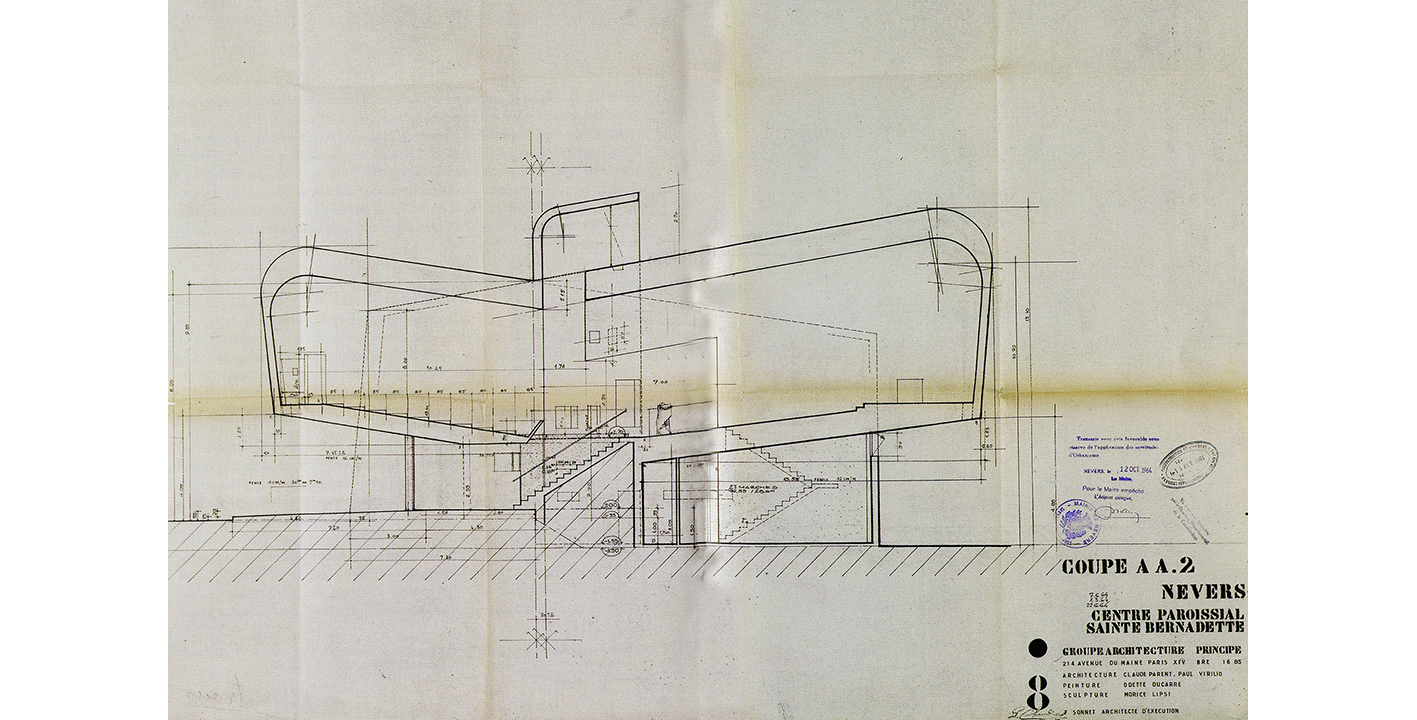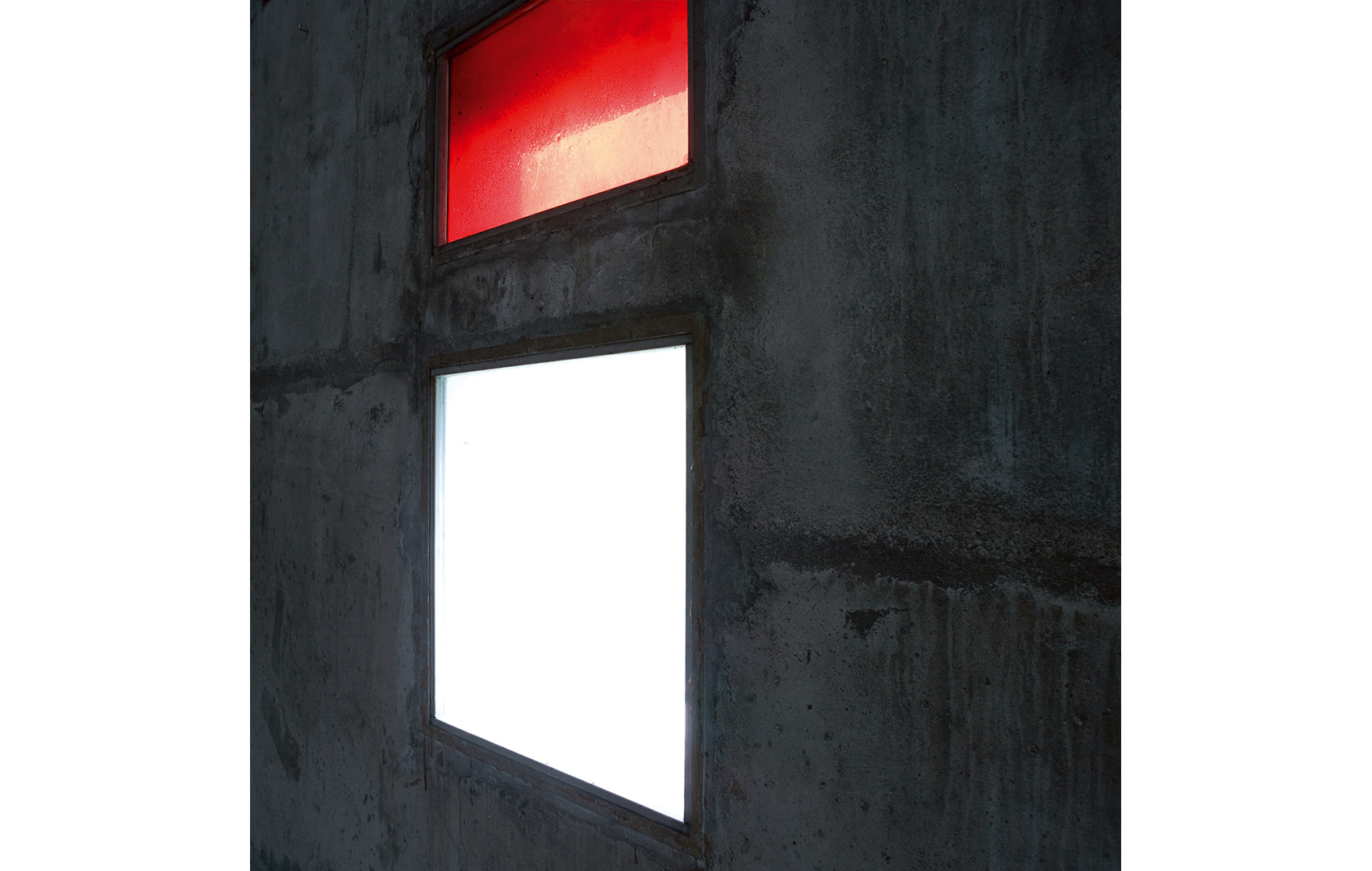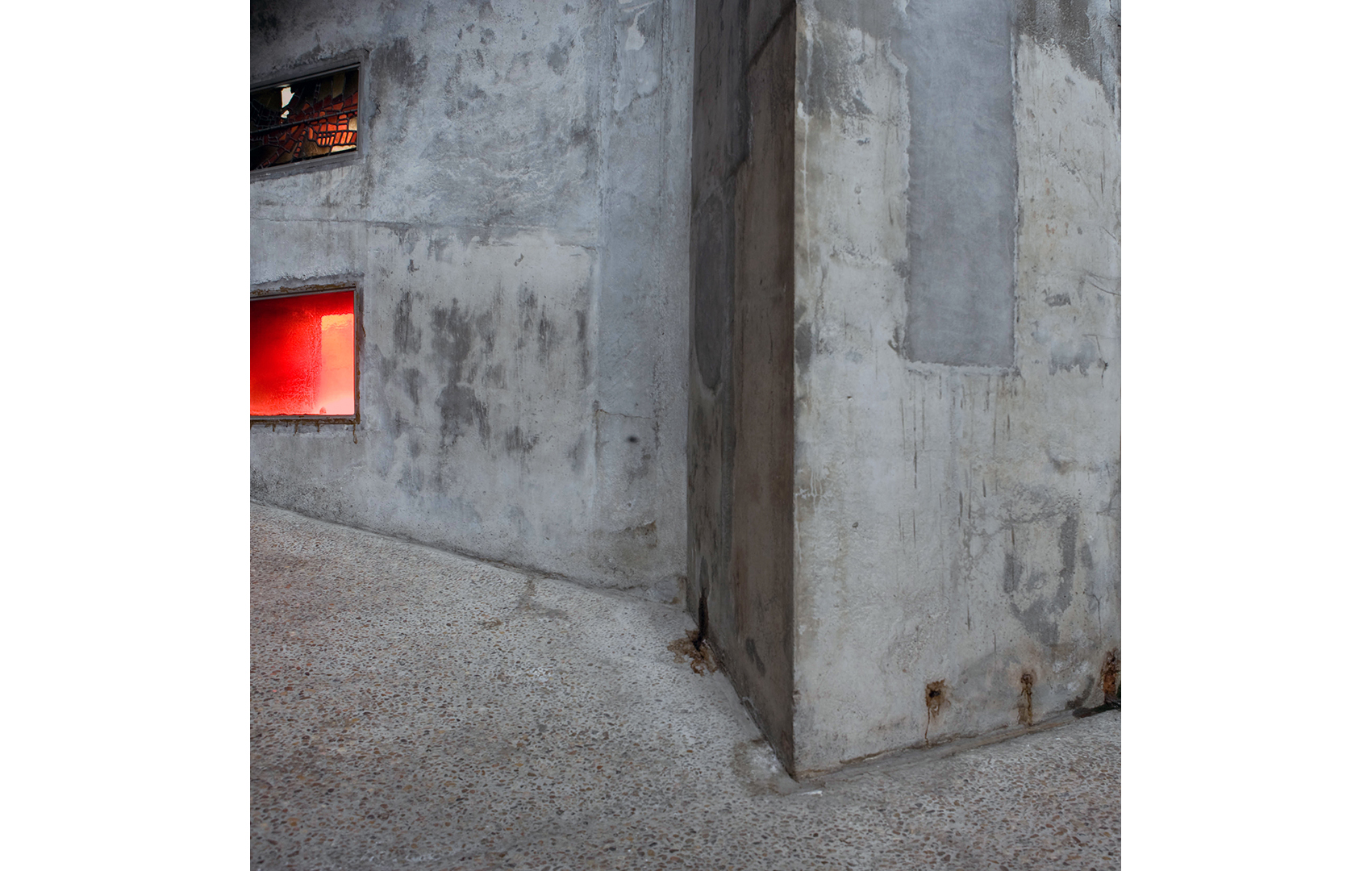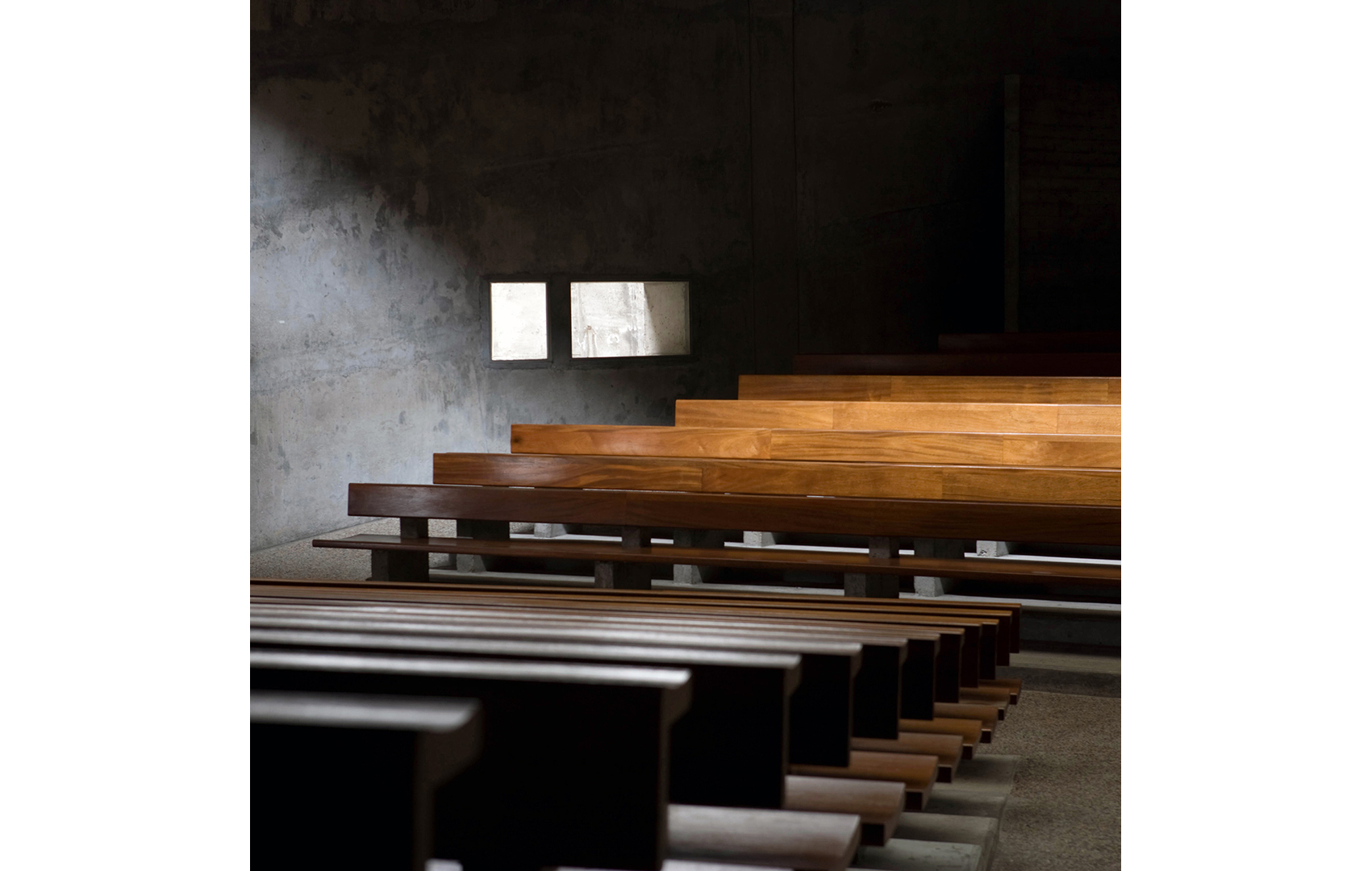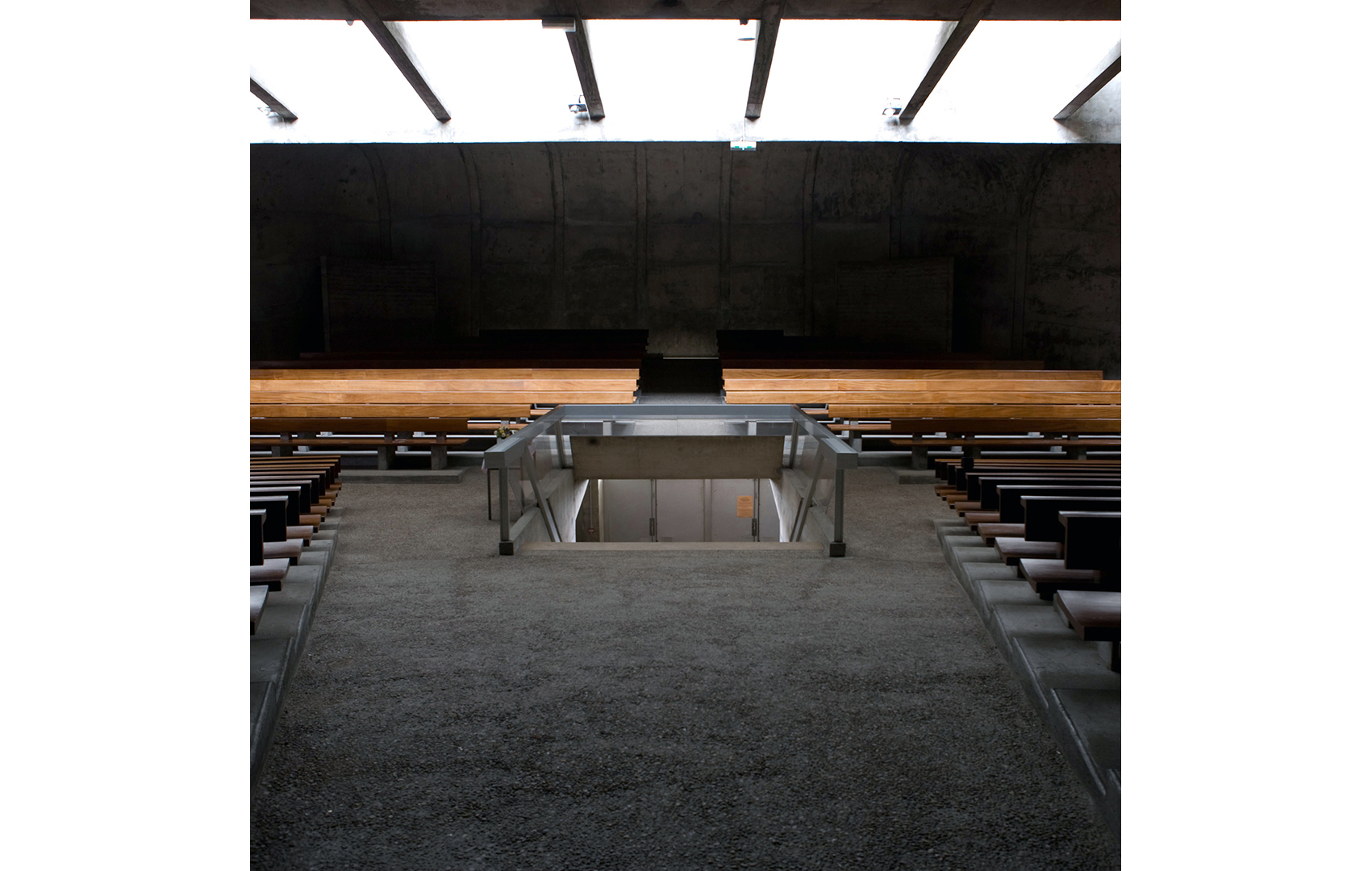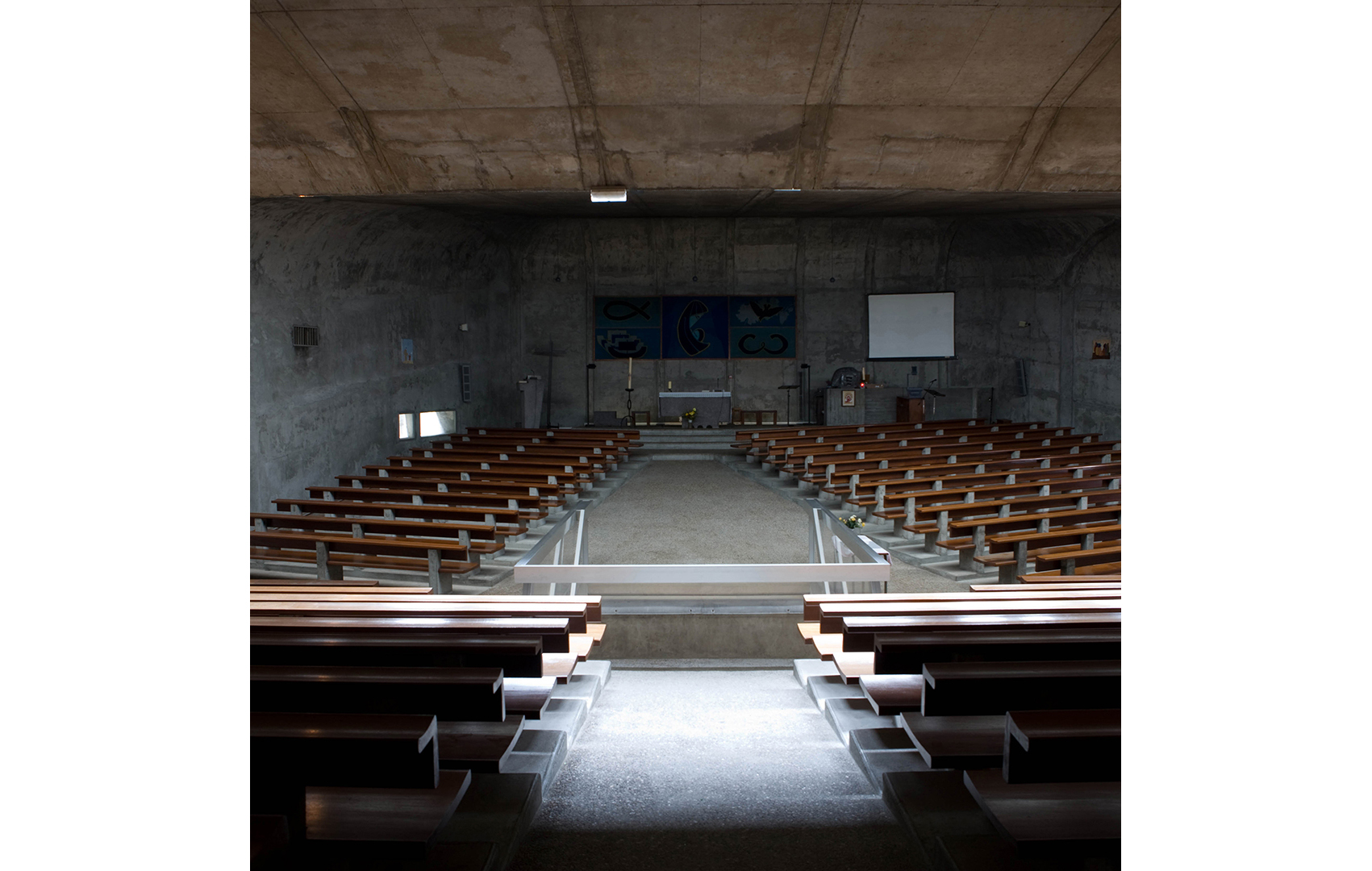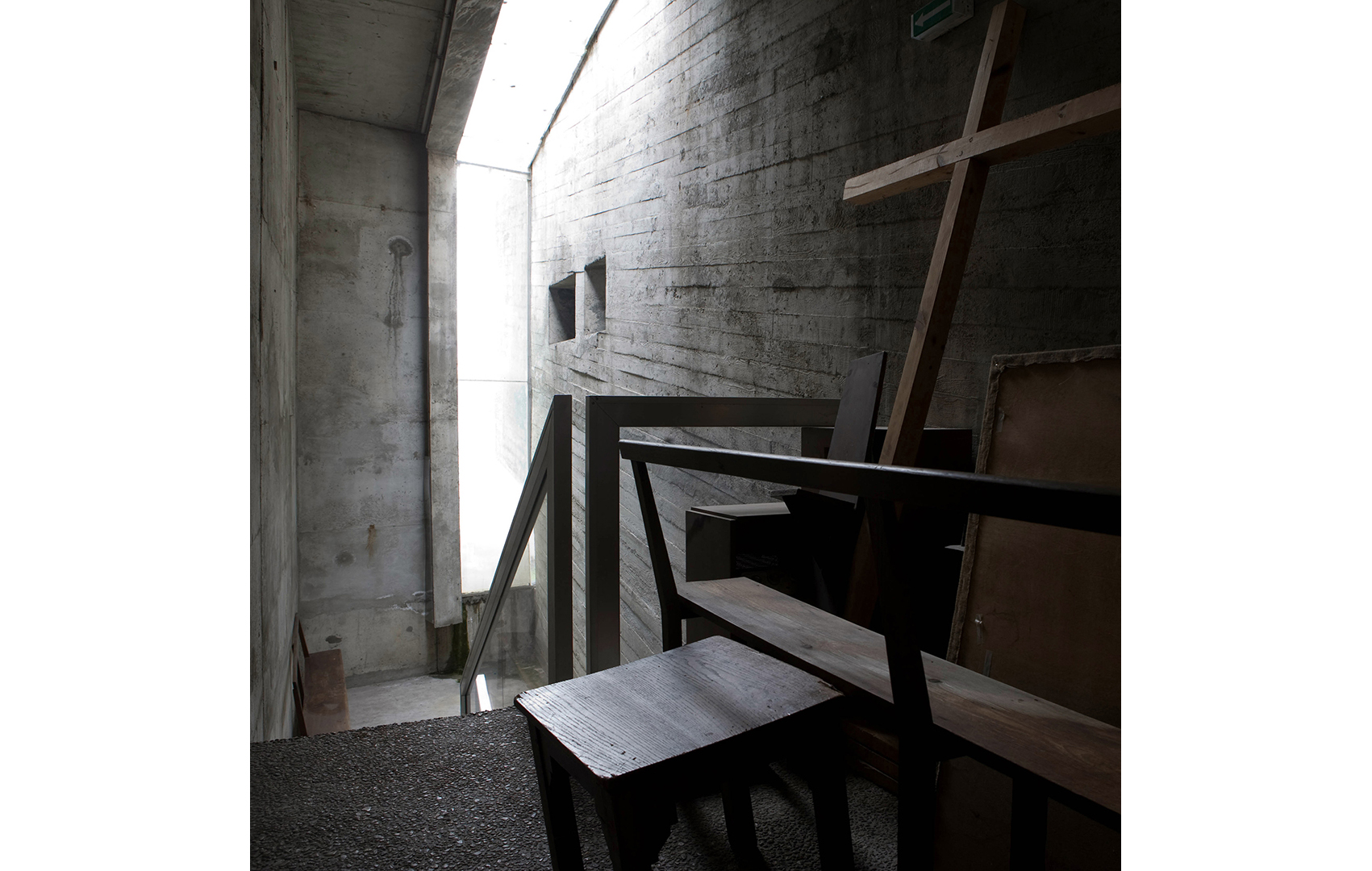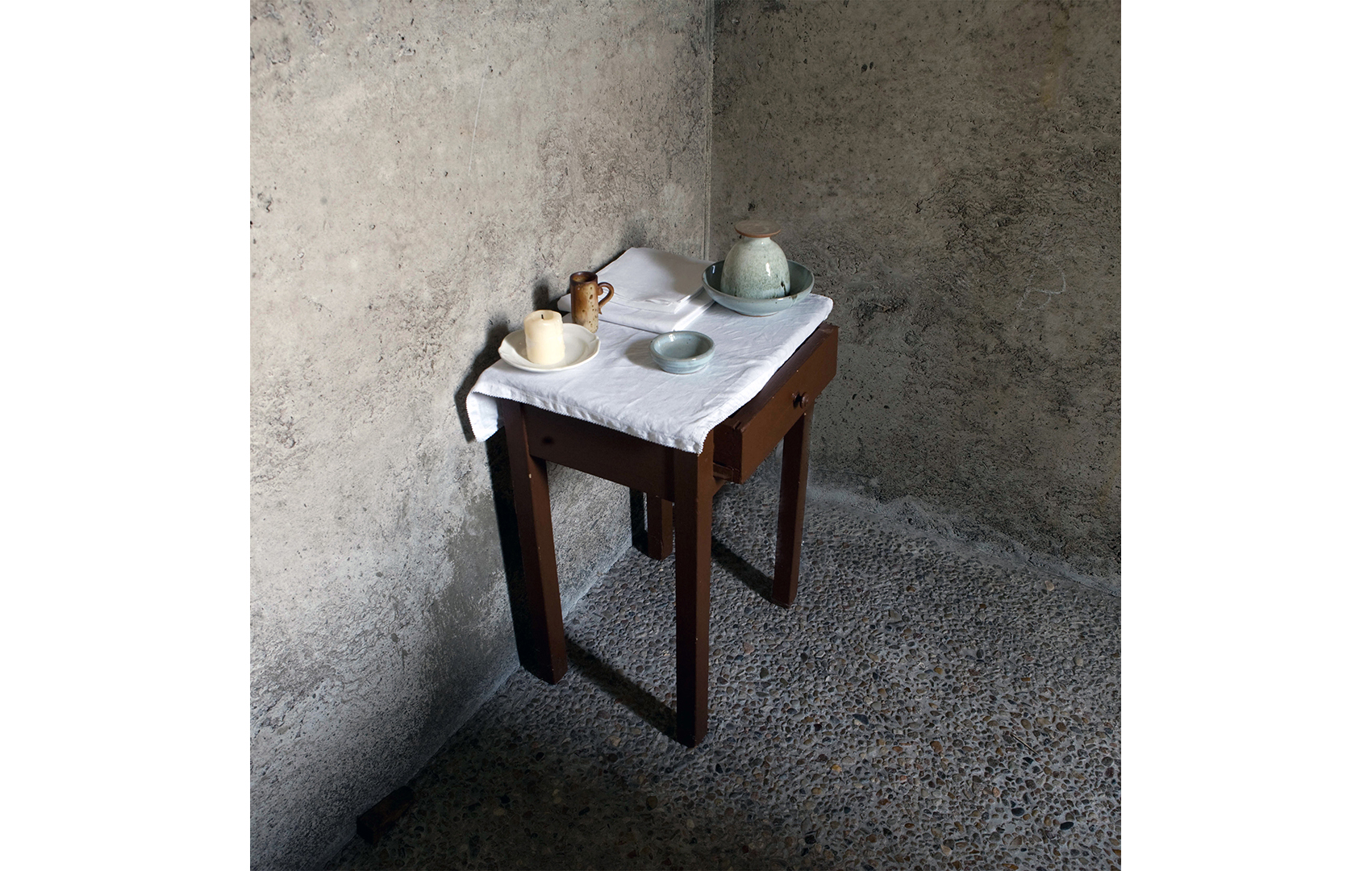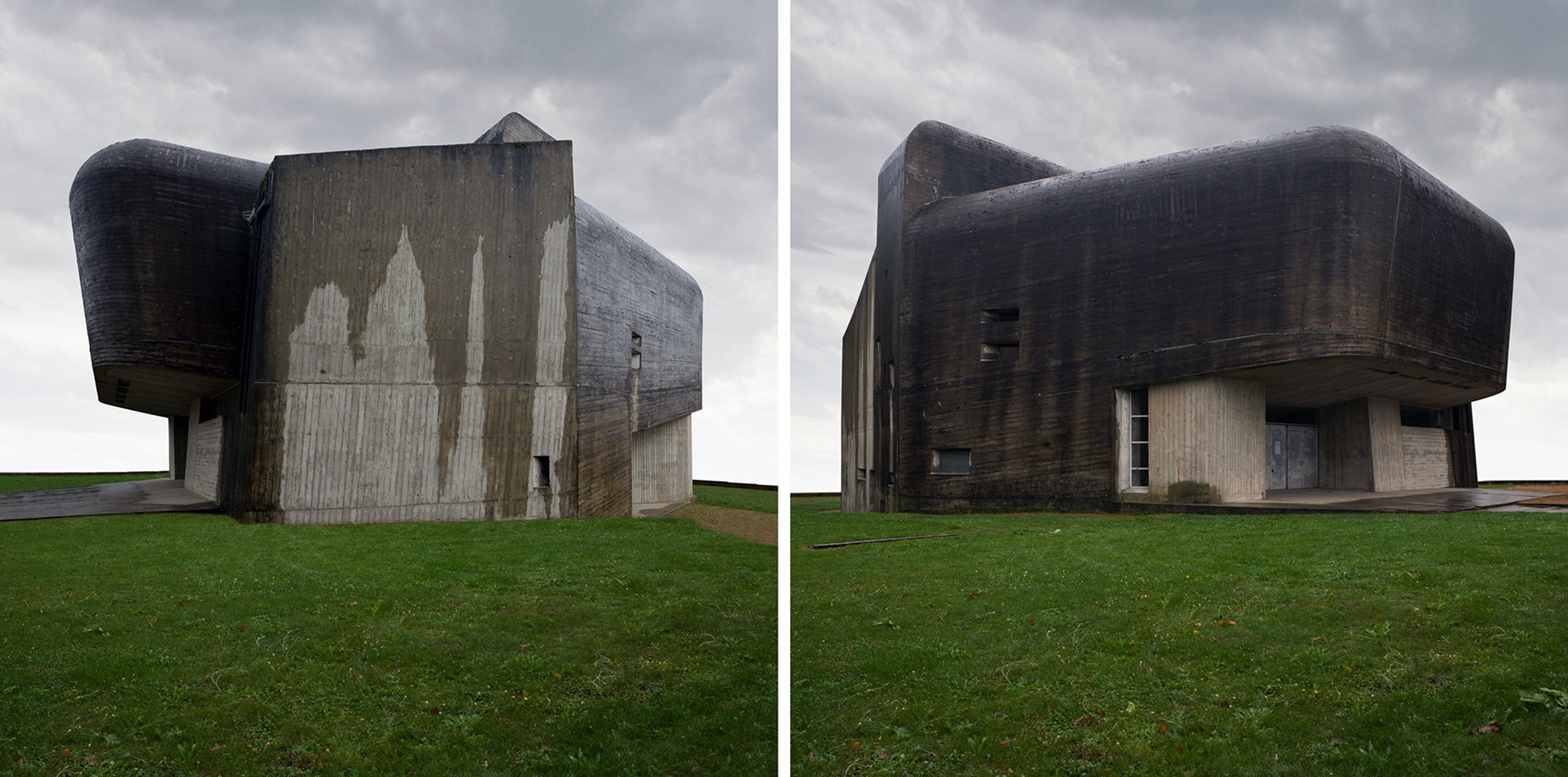Guerre froide / 2009
Guerre froide, série de 15 photographies, tailles variables
En 1966 à Nevers, l’église Sainte-Bernadette-du-Banlay voit le jour, fruit de la collaboration de Claude Parent, architecte et de Paul Virilio, urbaniste et essayiste. Ils fondent ensemble le groupe Architecture Principe, développent de nouvelles relations aux territoires urbains, et rendent compte par là même d’un certain état du monde fracturé, violent, complexe. Référence au bunker comme l’abri protecteur, l’église Sainte-Bernadette est un édifice témoin d’un siècle qui a accumulé les drames, les guerres les plus tragiques de l’histoire. Vingt ans à peine nous séparent alors de la seconde guerre mondiale, le bunker figure le souvenir de ses atrocités. Nous sommes en pleine guerre froide, l’abri c’est surtout l’abri atomique dont certaines capitales entreprennent la construction pour sauver leurs populations. C’est la menace de la guerre atomique qui plane. La grotte, c’est la deuxième référence après le bunker. L’intérieur en opposition avec l’extérieur se veut un refuge, au même titre que la religion. Claude Parent dit : « Lorsque Paul Virilio et moi avons conçu l’église Sainte-Bernadette à Nevers, nous connaissions de façon inconsciente son caractère perturbateur mais nous étions loin d’imaginer la violence qu’engendrerait cet édifice ». Elle fût menacée pendant des années de destruction et après 35 ans de purgatoire, elle ne figure dans aucun livre sur l’architecture française. Le 25 mai 2000, l’église est inscrite au titre des monuments historiques, elle rejoint alors les neuf églises classées sur les quatre mille édifices du XXéme siècle.
Guerre froide, série of 15 photographs, variable sizes
In 1966 in Nevers, the Church of Sainte-Bernadette-du-Banlay was born from the collaboration of Claude Parent, architect, and Paul Virilio, town-planner and essayist. Together they founded the group « Architecture Principe », developing new relationships between urban areas, and reflecting upon a certain state of the world, fractured, violent and complex. Just twenty years separated the building from World War II. The bunker represents the memory of past atrocities. The construction was during the time of the Cold War, and was a time that many capital cities were building atomic shelters. The threat of a nuclear war was looming. The cave is the second reference after the bunker. In opposition to the exterior, the interior of the church is like a refuge, as is religion. Claude Parent says: « When Paul Virilio and I designed the Church of St. Bernadette in Nevers, we knew unconsciously its disruptive character, but we were far from imagining the violence that could be created the construction. The Church has been threatened for years of destruction and after 35 years of purgatory, it doesn’t appear in any book about french architecture. The 25 May 2000, the church was listed as a historic monument and joins nine other churches listed out of the four thousand buildings of the twentieth century.
